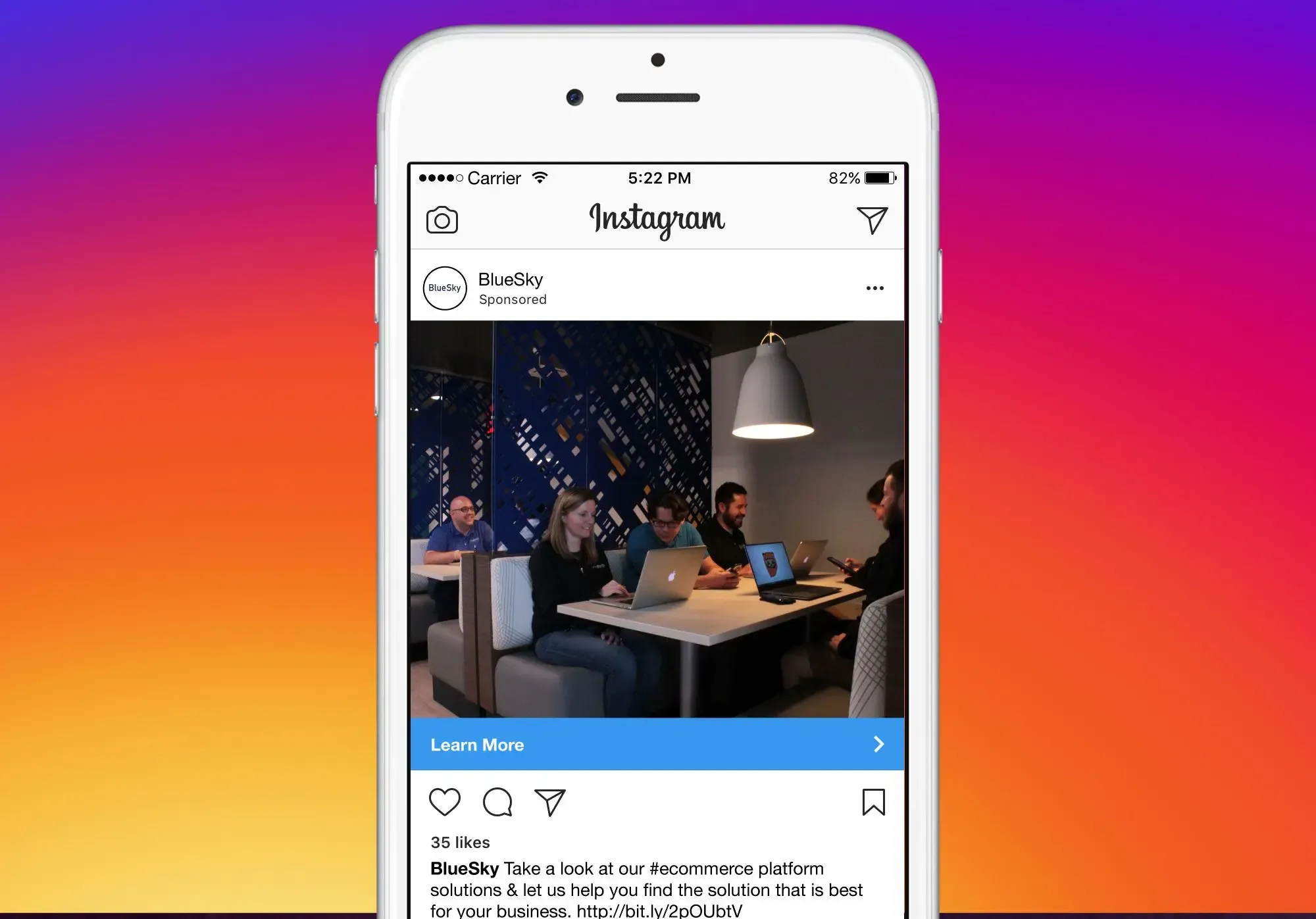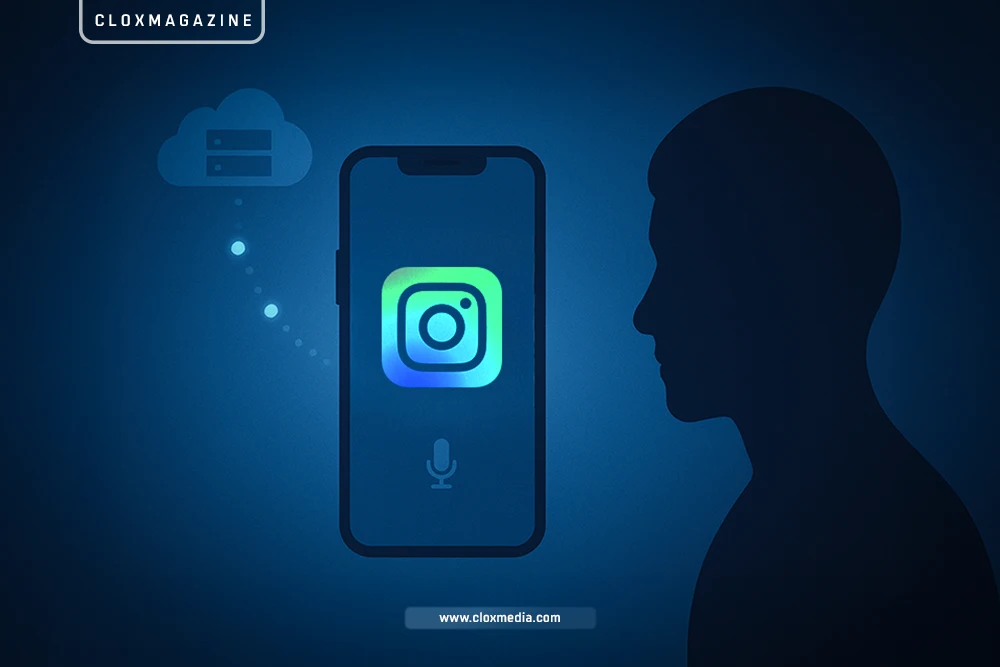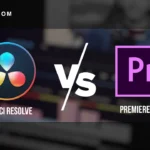Is Instagram actually eavesdropping on your conversations? Many users have experienced the eerie scenario: you chat with a friend about something, and suddenly an ad for that very thing pops up on Instagram. It feels almost too coincidental, prompting a widespread belief that the app must be secretly listening through your phone’s microphone. This idea – that Meta (Instagram’s parent company) surreptitiously turns on your mic to target ads – has become an urban legend in the digital age.
But according to Instagram’s head, Adam Mosseri, the truth is both simpler and more surprising: Instagram isn’t spying on your mic, and with the wealth of data it has (especially from AI), it doesn’t need to.
NOTE: This is an official Research Paper by “CLOXLABS“
The Long-Running ‘Microphone’ Myth
The notion that Facebook or Instagram secretly records users’ conversations for ads has been around for years – long enough to be called an “age-old conspiracy theory”.
It feels plausible because Meta’s ad targeting can be uncannily precise. As Mosseri acknowledges, many people have asked how Instagram’s ads can “know” about things they only discussed aloud. By now, almost everyone has heard a story about mentioning a product in real life and then seeing an ad for it shortly after. Sometimes you might not even speak a word and voilà, a related ad appears, making it seem as if Instagram is a mind reader.
… All ADS on this platform are served by GOOGLE …
The “Instagram is listening” theory became so prevalent that Meta has publicly refuted it multiple times over the years. In 2016, the company (then known as Facebook) explicitly stated in a blog post that it “didn’t use your phone’s microphone” to influence ads or News Feed content. In 2018, CEO Mark Zuckerberg, under oath in a Congressional hearing, also flatly denied that the company collects ambient audio for ad targeting.

Not only has Meta denied it, independent research also casts doubt on the eavesdropping myth. In one well-known study, Northeastern University researchers analyzed thousands of popular apps to see if any were secretly recording audio. “There were no audio leaks at all – not a single app activated the microphone,” one of the researchers reported. In fact, the team found other privacy issues (like some apps taking screen recordings), but no evidence of hidden microphone spying.
This aligns with what tech experts have long suspected: if Instagram was constantly listening via your mic, it would likely be detected, drain your battery, and trigger visible indicators on your phone. Mosseri himself notes that any secret recording would be quickly noticed – your phone’s recording indicator light would come on, and your battery would drain faster from the continuous mic use. Plus, as he put it, “Listening to you through your phone’s microphone would be a gross violation of privacy.” (And even Mosseri slyly admits such an invasive trick is far outside the norm – Meta is “not a company that typically drives decisions with user privacy in mind,” one tech reporter wryly observed.) In short, the official word from Instagram’s leadership and the data we have is: “No, Instagram isn’t secretly recording your conversations through your microphone.”
How Instagram Really Knows What You Like
If Instagram isn’t listening, then why are its ads so spot-on? The answer lies in the vast amount of data and AI-driven analysis that powers modern ad targeting – essentially, Instagram doesn’t have to “hear” your talks because it already sees so much of what you do online. Mosseri’s myth-busting video explains several non-nefarious explanations for those spooky coincidental ads. Here are a few key reasons:
- Your Own Online Activity: In many cases, you might have searched or clicked on something related to the product, either on Instagram or elsewhere on the web, before you ever talked about it. Websites and advertisers often share data with Meta about what products people browse on their sites. So if you looked at a pair of shoes on a shopping site, that site could have informed Facebook/Instagram, which later serves you an ad for the same shoes. It feels like Instagram “magically” knew, but really you left a digital trail.
- Your Social Circle’s Interests: Instagram’s algorithms also consider what your friends and people with similar tastes are engaging with. If someone you know (or simply a cohort of users with similar profiles) searched for that camping gear you mentioned, Instagram might show you the same product ad, assuming it’s relevant. In Mosseri’s words, “we show people ads… based on what their friends are interested in and what similar people with similar interests are interested in”. So that conversation you had about a new gadget might coincide with your friend having googled it – causing you to get the ad without any microphone needed.
- Subconscious Priming: Another subtle factor is that you could have already seen an ad or post about the topic before you talked about it, but you scrolled past it without really noticing. Our brains often register things we see briefly. Later, when the topic comes up in conversation, it feels fresh, and then seeing an ad feels like a strange coincidence. In reality, Instagram had shown you the ad earlier and planted the seed. As Mosseri explains, “We scroll by ads quickly, and sometimes you internalize some of that, and that actually affects what you talk about later.” In other words, the causality might be reversed – your conversation didn’t cause the ad; the ad (or post) might have subtly influenced your conversation!
- Plain Old Coincidence: And yes, sometimes it’s just random chance. With the sheer volume of topics we all discuss and think about, occasionally you’re bound to talk about something right before seeing an ad on it. It’s like thinking of an old friend and then they happen to call you – uncanny, but statistically bound to happen once in a while. As Mosseri noted, “random chance… happens”. We humans are great at spotting patterns and coincidences, sometimes even when none exist.

All these factors underscore a key point: Instagram’s ad targeting feels “psychic” not because it’s secretly listening, but because it’s leveraging big data and sophisticated algorithms. The platform knows a lot about you – what you like, who your friends are, what you browse – and it uses that to predict what ads might grab your attention. This data-driven approach has turned Meta’s ad system into, as TechCrunch quipped, a “money-printing machine” over the years. In essence, Instagram doesn’t need to hear your voice; your clicks, taps, and views are loud enough.
The AI Advantage – Even More Data (No Mic Required)
Here’s the twist that makes this topic especially timely: Meta is now leaning even further into AI to target ads, meaning it has more insight on you than ever – without any eavesdropping. In fact, Mosseri’s reassurance that Instagram isn’t using your mic came on the very same day Meta announced a new initiative: using data from your interactions with its AI features to hone ad targeting. Put simply, Meta realized it can “listen” to you in a different way – by looking at what you tell its AI.
… All ADS on this platform are served by GOOGLE …
Think about Meta’s new AI chatbots and features (for example, the Meta AI assistant you can message on WhatsApp, Messenger, or Instagram). These AIs can engage you in detailed conversations, and you might ask them questions or discuss personal interests. Meta confirmed that data from those AI chats will now feed its advertising machine. The company is even updating its privacy policy (effective December 16, 2025) to officially allow using information from your “interactions with its AI products” as another signal for ads. In other words, if you chat with Meta’s AI about your upcoming hiking trip, don’t be surprised to start seeing ads for hiking gear soon after – not because your phone overheard you, but because you told Meta’s chatbot and it took notes.
From Meta’s perspective, this AI-derived data is pure gold. The company already builds incredibly detailed profiles on users to serve hyper-targeted ads. Now, AI chats are “a rich new stream of information,” as one report put it. Meta says over a billion people converse with its AI every month, often in long, personal chats. That’s a treasure trove of insights about what people want, think, and need – all volunteered directly by the users in conversation. And it’s not just text chats: if you use Meta’s AI features in other products (say, voice commands to Meta’s smart glasses, or the new AI image generator), those too can yield data points about your interests. Meta can aggregate all that information to refine the ads it shows you. One Meta spokesperson gave a simple example: if a user chats with Meta’s AI about hiking, the company may show ads for hiking gear. It’s straightforward and, from Meta’s standpoint, effective.
Crucially, this shift means Meta “definitely won’t need” to rely on any sneaky microphone tricks now – as TechCrunch wryly noted, if they didn’t need to before, they certainly don’t with these new AI data pipelines. The AI is effectively doing the listening (in an above-board way): you tell it your interests, and Meta uses that to tailor ads. This development highlights a broader truth of the digital economy: our data (messages, clicks, chats, etc.) is so plentiful and revealing that companies can predict our needs without literal eavesdropping. In fact, there’s no off switch for this within most of Meta’s services – Meta’s new policy of using AI interaction data applies globally (with a few exceptions due to local laws), and users won’t have a way to opt out of this data collection for ads. The old joke “Facebook is listening to me!” is almost outdated – because we’re willingly talking to Facebook’s AIs, and that may be an even more powerful form of “listening.”
When Ads Feel Creepy, Is It All in Our Heads?
Even with all these explanations, many people remain convinced their phone must be wiretapped. Mosseri himself admitted, “I know some of you are just not going to believe me, no matter how much I try to explain it.” And sure enough, when he posted his myth-busting video, skeptical comments poured in; one of the top responses drily said, “That is exactly what I would say if I was listening to people’s conversations.”. It’s a classic case of how difficult it is to dispel a belief once it’s taken hold, especially when coincidences feel so personal. Part of why the microphone myth endures is psychology: when an eerie ad coincidence happens, it’s memorable and reinforces our suspicion. When nothing weird happens, we don’t give it a second thought. This is known as confirmation bias – we notice and remember the hits (“Instagram showed me exactly what I talked about!”) and forget the misses (all the times ads had no clear link to our conversations).
There’s also the factor of the frequency illusion (sometimes called the Baader-Meinhof phenomenon): once you notice something (like a particular product or idea), you start seeing it everywhere. So after talking about a topic, you become hyper-aware of related ads or posts, making them seem more prevalent. It’s not that Instagram suddenly started pushing those ads because you spoke – it’s that you are now tuned in to noticing them. Our human brains are superb at finding patterns and making connections, sometimes even when none exist, which can trick us into drawing the wrong conclusions.
From a technical standpoint, as we’ve seen, Instagram’s highly accurate ad targeting can be explained without secret recordings. Advertisers and data brokers have created an ecosystem where your browsing habits, shopping history, location, and even your friends’ interests all contribute to the ads you see. Add to that Instagram’s sophisticated AI algorithms crunching this data, and the results are ads that can feel uncanny. The real story isn’t that our phones are spying audiowise; it’s that our apps and websites are eagerly compiling everything we voluntarily do online. In a sense, Instagram and Facebook are “listening,” but not with microphones – they’re listening to your clicks, your searches, your posts, and now even your chats with AI.
The Bottom Line: No Mic, No Problem (for Instagram Not for you)
The head of Instagram wants you to know: Instagram is not secretly using your microphone to target ads. The company has been fighting this myth for years, and all available evidence backs up that it’s just that – a myth. So the next time you see an ad that’s spookily on-point, it’s not because your phone bugged your lunch conversation. It’s because, through a combination of vast data collection and clever AI prediction, Instagram already has a pretty good idea of what’s on your mind. As one TechCrunch report put it, “if Meta didn’t need to record your conversations via your microphone before to produce eerily accurate recommendations, it definitely won’t need to now”.
None of this is to say you weren’t onto something – your phone is extremely good at knowing your interests, just via legitimate (if unsettling) means rather than covert audio snooping. It’s a reminder that in the modern internet economy, data is power. Meta and other tech giants have so many ways to learn about you that literal eavesdropping isn’t necessary. Instead of worrying about the microphone, a more pragmatic question might be how all that freely given data is being used. Mosseri’s reassurance might put one creepy theory to rest, but it also shines light on an even bigger reality: Instagram doesn’t need to spy on your speech when your own clicks and keystrokes (and AI chats) willingly tell a detailed story about you. In the end, the mystery of the “phone that reads your mind” has an answer that’s less magical, but perhaps more thought-provoking: it’s not telepathy or tech sorcery – it’s just Big Data and AI doing what they do best.
Sources:
The Verge
Northeastern University research
Meta AI policy update
… All ADS on this platform are served by GOOGLE …





